Ranking baseball’s general managers for 2018: Part 3

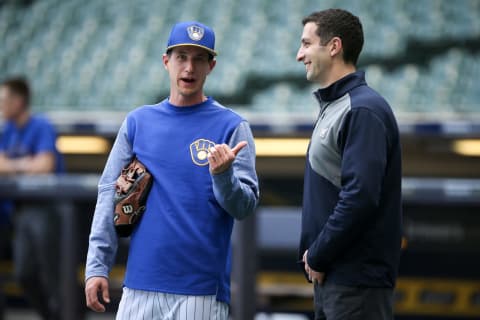
How well each general manager did his job during 2018: Places 10-1
A baseball general manager’s job is to improve his team. But that doesn’t always happen.
This concludes a three-part series assessing how well each general manager did during the 2018 season. The ratings are based on the total number of Wins Above Average generated by each player brought to the major league roster either by trade, purchase, free agency, waiver claim, or promotion from the minor league. It also factors in the value – again measured by Wins Above Average – of each player lost to the team due to sale, waiver or free agency.
Wins Above Average is a variant of Wins Above Replacement, the principal difference being that while Wins Above Replacement measures a player against the baseline established for a minor league replacement, Wins Above Average uses the average of all major league players as its baseline.
Because the Cincinnati Reds changed general managers during the season, there are 31 general managers evaluated for their performance during the 2018 season.
At the outset, it is worth acknowledging that not every general manager’s goal is to win immediately. That means some GMs whose goal was long-term restructuring may actually assess themselves as having accomplished what they intended – by moving costly stars for upcoming prospects — even if the result was a talent drain during 2018.
This measurement rates GMs only for the extent to which they improved or damaged their team’s performance during the 2018 season.
This segment rates the elite of GM performance, those between No. 10 and 1. It includes the GMs of three teams that failed to reach post-season play as well as the only general manager whose moves actually maneuvered his ballclub into the playoffs.
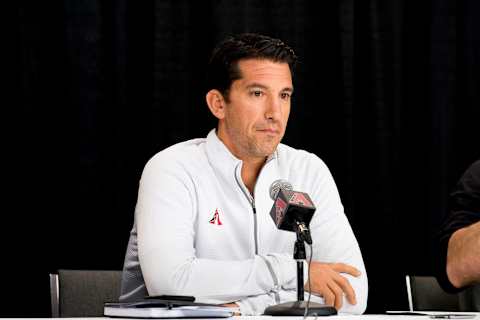
10. Mike Hazen, Arizona Diamondbacks, +2.1 games
By most accounts, the Arizona Diamondbacks were a disappointment in 2018. They finished just two games above .500, fell with a thud from the NL West race in September, and lost 11 games in the standings from 2017.
So what’s Mike Hazen doing this high up on the list?
The truth is that the D-Backs’ problems had far more to do with ill fortune than with any problems Hazen created. Arizona’s Pythagorean record – what it should have done based on runs scored and allowed – was 86-76, four games better than its actual record and one game better than the Rockies’ Pythagorean record. Arizona out-scored its opponents by 49 runs, Colorado by 35. Translation: to a fatal degree, fate intervened against Arizona in 2018.
Nothing Hazen did was spectacular, but the aggregate was solid. The May minimum-dollar signing of Clay Buchholz, who had been released by Kansas City, got little attention but paid off when Buchholz went 7-2 in 16 starts. He found Yoshihisa Hirano in the Japanese leagues and got a solid season’s worth of relief work that was a breath of fresh air in an otherwise leaky Arizona pen.
The indictment against Hazen would be his inability to persuade any new big-name talent to come to the desert. You can scan the list of arrivals and find no name more prominent than Steven Souza, Brad Boxberger or Jarrod Dyson, none of them calculated to turn a contender into a winner.
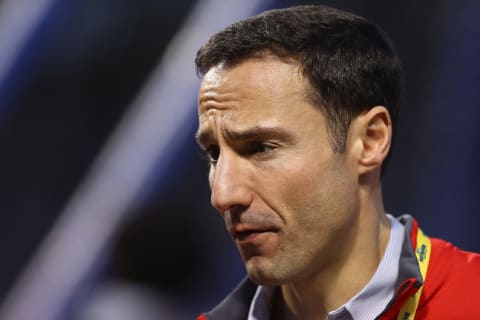
9. Mike Chernoff, Cleveland Indians, +2.3 games
Heading up a playoff-caliber team in a weak division, Chernoff largely confined himself to touch-up moves that did not fundamentally alter the cast.
His most obvious strength lay in knowing who to walk away from. Following the 2017 season, the Indians let seven players walk away, and those seven produced -5.8 WAA for their new teams. Particularly, Chernoff was smart enough to see the pointlessness of trying to hold on to Austin Jackson (.245, 3 homers, 32 RBIs for the Giants and Mets) . Those same Mets gave ex-Indian Jay Bruce a three-year, $39 million deal and Bruce gave them a .223 average in 361 plate appearances.
The indictment of Chernoff would be for what he failed to do to the Indians. Comfortable in the AL Central, his moves were relatively minimalist, consisting of the callups of four inconspicuous farm products, the signing or re-signing of 14 to new contracts, and the acquisition of six players by trade.
The two most notable arrivals probably were Yonder Alonso, signed to a three-year, $24 million deal out of Seattle, and the deadline trade for Josh Donaldson. Alonso was supposed to spice up life around first base following the loss of free agent Carlos Santana, but his .250 average (albeit with 23 home runs) yielded a -0.4 WAA.
Donaldson actually did contribute value, although by the time he came on board at the end of July Cleveland was so far out in front that the +0.5 WAA he provided was superfluous to the regular season. His true potential value lay in the post-season, where his 1-for-12 showing against the Astros proved once again the futility of trying to build for the post-season.
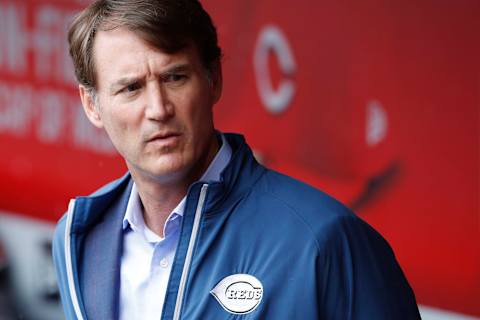
T-7. Dick Williams, Cincinnati Reds, +2.5 games
Dick Williams, now the Reds’ president of baseball operations, was named general manager prior to the 2015 season and functioned in a dual capacity until Nick Krall replaced him as GM in mid-May.
Virtually his last act was the trade that brought Matt Harvey over from the Mets for Devin Mesoraco, a modest short-term addition for the Reds. Harvey is a free agent, so whether the deal has any long-term value for Cincinnati is yet to be seen.
Before moving upstairs, Williams upgraded and somewhat stabilized what appears to be an improving Reds team. His most significant action probably was getting Eugenio Suarez, a 27-year-old rising star, to agree to a $77 million deal that keeps him in Cincinnati through 2025. In the first season of that deal, Suarez hit .283 with 34 home runs and 104 RBIs, those numbers amounting to +2.3 WAA.
Reliever Jared Hughes may not have that kind of long-term potential, but the three-year, $7.25 million deal Williams signed him to yielded a 1.94 ERA in 72 relief appearances, good for another +2.3 WAA.
Before turning the team over to Krall, Williams made 24 player personnel moves. Although Cincinnati finished last in the NL Central, the Reds have the look of a team on the uptick. If that eventually proves to be the case, Williams may deserve a substantial portion of the credit.

T-7. David Forst, Oakland A’s, +2.5 games
Because Oakland did so well with so little in the way of financial resources, the assumption is that an A’s front office occupant – either Forst or his boss, Billy Beane, will be named American League Executive of the Year. While a few GMs did have better seasons, Forst’s was good enough to justify the praise flowing his way.
The truth is that the A’s were going to be good in 2018 no matter what Forst did. The heart of the team – Jed Lowrie, Blake Treinen, Matt Chapman, Matt Olson, Marcus Semien and Sean Manaea, were all securely under contract before Forst did anything. In fact his most significant move was a departure, the trade of Ryon Healy to Seattle for a pair of minor leaguers.
The minor leaguers may or may not ever do anything for the A’s, but Healy’s departure cleared the way for Chapman and Olson to blossom at third and first. It was a clear case of addition by subtraction.
Forst attacked outfield gaps in piecemeal, but effective fashion. The trade for Stephen Piscotty brought power (27 home runs) and a competent .267 average. Ramon Laureano came over from Houston for a minor leaguer and hit .288 in part-time use. Career minor leaguer Nick Martini found a platoon home in left and batted .296. The sum of those three under-the-radar acquisitions: +2.9 WAA.
What Forst did with the rotation, torn apart by injuries, amounted to a survival exercise. Still, bargain-basement free agents Trevor Cahill, Edwin Jackson and Brett Anderson gave the team 54 starts and a cumulative +0.8 WAA, meaning they fulfilled the prime directive of not getting in the way.
Put it all together and the result is a playoff team.
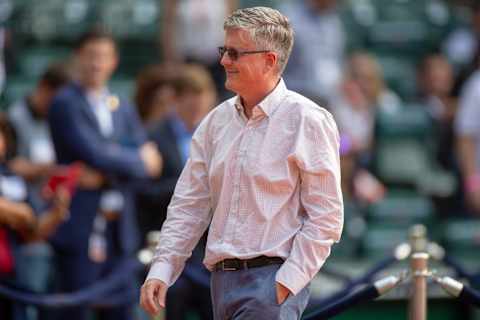
6. Jeff Luhnow, Houston Astros, +3.3 games
With a World Series championship roster, Luhnow wisely emphasized quality over quantity in his roster decisions. Only 24 players came and/or went between the ends of the 2017 and 2018 seasons, making Houston something of a sea of tranquility on the baseball landscape. A couple of those moves, though, were major.
Begin with the obvious, the trade for Gerrit Cole to buttress an already-strong rotation. One of only four players to arrive by trade all season, Cole’s 15-5 record and 2.88 ERA in 32 starts must have surpassed expectations; it yielded a +3.4 WAA.
Luhnow’s one regret might be his failure to pursue the re-signing of free agent Mike Fiers, who left for Detroit (and eventually Oakland), where he delivered a 12-8 record and 3.56 ERA in 30 starts, good for +2.2 WAA.
Most of the rest of what Luhnow did in 2018 amounted to tinkering around the edges. His trade deadline acquisition of pitcher Ryan Pressly from the Twins for two minor leagues was a modest (+0.8) benefit, as was his decision to give George Springer a two-year, $24 million deal.
Luhnow used nine first-year farm system products in 2018, but none in front-line roles. The most impactful, reserve outfielder Kyle Tucker and backup catcher J.D. Davis, produced negative WAAs, but neither played enough to be of consequence.
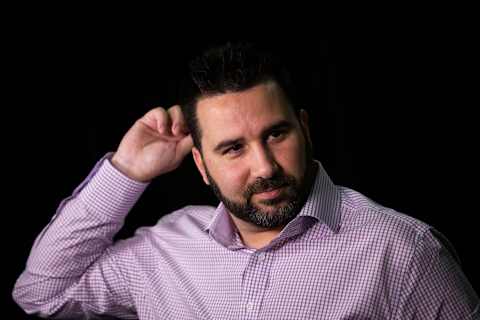
5. Alex Anthopoulos, Atlanta Braves, +3.5 games
His work with the Braves is noteworthy for a couple of reasons, not least of which is that Anthopoulos was no part of Atlanta’s plans until an MLB investigation turned up irregularities surrounding Atlanta’s handling of international prospects toward the end of the 2017 season.
In October that led to the dismissal – and lifetime banning from MLB — of GM John Coppolella and forced the Braves to do a quick search for a replacement. Anthopoulos, the former Toronto Blue Jays GM and at the time an executive in the Dodgers front office, was available, and in November the Braves hired him.
The sexy path would be to credit Anthopoulos for Atlanta’s sudden rise from an NL East afterthought to division champion. There is some measure of truth to that, although the reality is the Braves were positioned for a sharp upward tic even before Anthopoulos arrived. The core of the team was put in place by Coppolella and Anthopoulos’ major farm system harvest – outfielder Ronald Acuna Jr. – had grown through Copollela’s system.
Giving Anthopoulos credit for “producing” Acuna and his +2.9 WAA, while technically true, is a bit misleading.
Still Anthopoulos gets credit for enhancing the Braves’ core. His pickup of journeyman pitcher Anibal Sanchez (+1.9 WAA) filled an obvious need. His re-signing of backup catcher Kurt Suzuki went largely unnoticed, but proved to be solid if unspectacular.
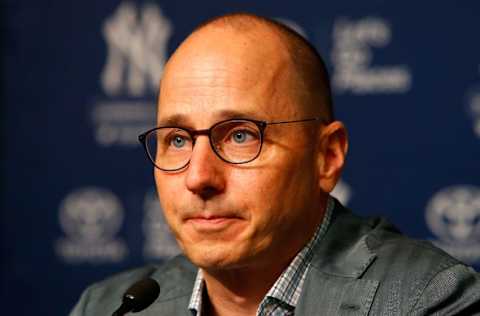
4. Brian Cashman, New York Yankees, +4.6 games
The Yankees are famous – okay, notorious – for their excessive use of payroll. So there is at least a small amount of irony to the fact that Cashman’s solid season was built on the most hands-on of all GM skills, straight-up dealing.
He brought 11 players to the Yankees via trades or purchases with other teams, and several played central roles in the club’s push to the post-season. Two minor leaguers plus Starlin Castro landed Giancarlo Stanton from Miami, and Stanton produced +1.7 WAA. When Cashman needed another starter for the pennant push in July, he sent prospects Brandon Drury and Billy McKinney to Toronto for J.A. Happ, who returned +1.5 to the Yankees. Deals with Baltimore for Zach Britton, with St. Louis for Luke Voit and with San Francisco for Andrew McCutchen all also produced positive value.
The short-term impact of Cashman’s trade acquisitions came to +3.5 games, a nifty advance although not nifty enough to make a run at the Red Sox.
The Yankees were comparatively tame players at free agency, their biggest move being the re-signing of C.C. Sabathia for one season at $10 million.
Heralded rookies Gleyber Torres (+1.3WAA) and Miguel Andujar (+0.1 WAA) returned enough positive value to offset the introductory performances of an otherwise so-so cast of farm products, the net amounting to +0.2. If that sounds insufficient, keep in mind that rookies generally do more hurt than harm. The Yankees were one of only 11 teams in 2018 to get a positive impact from their first-year players.
3. Erik Neander, Tampa Bay Rays, +5.8 games
Competing head-on against the Red Sox and Yankees, the Rays didn’t reach the American League post-season in 2018. But they did win 90 games, and full credit for that surprising success goes to second-year GM Erik Neander.
Neander manipulated his fellow GMs out of 15 players who contributed to the Rays in 2018, and the net impact was +4.9 games, the best showing in that category by any GM.
His list of “victims” was impressive. In November, he sent a minor leaguer to Oakland and persuaded David Forst to give up Joey Wendle, who batted .300 in his first full season. In May he revisited Oakland, this time getting Wilmer Font (+1.0) for another minor leaguer. In June he talked Milwaukee’s David Stearns out of Ji-Man Choi (+0.4), giving up only Brad Miller in return. A month later he pried Tommy Pham (+2.0) away from Mike Girsch in St. Louis.
Neander also benefited from a productive farm system. Willie Adames, having been nurtured since 2014, finally arrived, played middle infield well and hit .278. Ryne Stanek, Diego Castillo and Jose Alvarado re-populated what was seen as an uncertain bullpen, combining for 172 appearances, nearly 190 innings and ERA between 2.39 (Alvarado) and 2.18 (Castillo). Their cumulative WAA was a productive +2.3.
Because Forst’s Athletics played in the post-season while Neander’s Rays did not, Forst is the likely American League Executive of the Year pick. But an excellent case could be made that the real winner should be Neander.
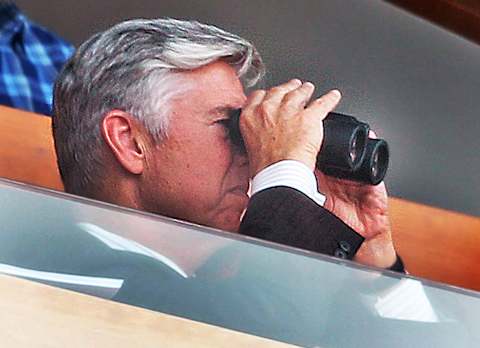
2. Dave Dombrowski, Boston Red Sox, +6.7 games
Entering the 2017-18 off-season, the Red Sox were already good enough that no major makeover was needed. So Dombrowski didn’t perform one.
But he did make one significant move, and that one – the free-agent signing of J.D.Martinez as a middle-of-the order bat, paid handsomely.
Martinez came at a pretty penny – a five-year deal at a shade under $110 million. But he returned a .330 batting average, 43 home runs, a league-leading 130 RBIs and +4.2 WAA while making a run at the American League’s MVP award.
Three other Dombrowski moves contributed to the extent of the Red Sox’ success, if not to the success itself.
In March he signed free agent Ryan Brasier as a bullpen backup. Brasier spent most of the season in Pawtucket, but once he arrived just prior to the All-Star break he delivered a 1.60 ERA in 33 innings of emergency work.
In June Dombrowski sent a minor leaguer to Toronto and got Steve Pearce, who hit .279 as a DH/outfielder.
Then in July, Dombrowski sent highly regarded prospect Jalen Beeks to Tampa Bay for starter Nathan Eovaldi. Beeks may in time develop, but Eovaldi – fresh from a succession of arm injuries – had proven with the Rays that he was big-league ready. He made 11 starts for the Red Sox, and added an ALDS victory over the Yankees.
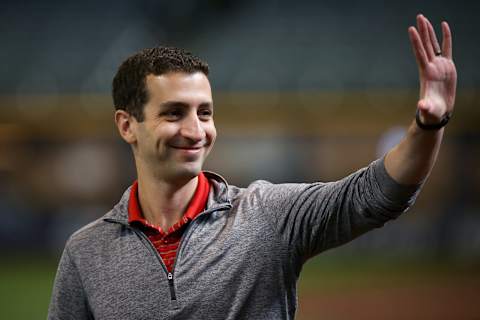
1. David Stearns, Milwaukee Brewers, +9.5 games
Let’s do the math. David Stearns improved the Brewers by 9.5 games. Milwaukee qualified for the post-season by a margin of 7.5 games. Ergo, and in a very real sense, Stearns maneuvered the Brewers into post-season play in 2018.
In fact among all 31 major league GMs in 2018, he was the only one who improved his team by more than the margin by which they reached the post-season.
That’s single transformative day in January had a lot to do with it. On Jan. 26, Stearns signed Lorenzo Cain to a five-year, $80 million free agent deal and packaged three prospects with speedy but unproven outfielder Lewis Brinson to Miami for Christian Yelich.
Between them, Cain and Yelich batted 1-2 all season, producing a pair of plus-.300 averages, 46 home runs, 148 RBIs, 52 stolen bases, +10.7 WAA and – in all probability – a Most Valuable Player Award for Yelich.
If that one day represented the sum total of Stearns’ efforts, his year would have been a good one. But there was more. Free agents Jhoulys Chacin (+0.4) and Wade Miley (+0.8) along with mid-season acquisition Gio Gonzalez (+0.4) gave the rotation stability and maturity. System product Corbin Burnes (+0.4) supplemented Jeremy Jeffress, Josh Hader and Joakim Soria to create probably the game’s best bullpen.
dark. Next. Building the 2018 Brewers
The prismatic quality of Stearns’ 2018 work on the Milwaukee roster can be summed up in one statement. This rating system assesses general managers across five areas of discernment: the players they traded for, the players they traded away, the players they signed or re-signed, the players they opted not to re-sign, and their farm system products. David Stearns was the only general manager in baseball to attain a positive score for all five categories in 2018.